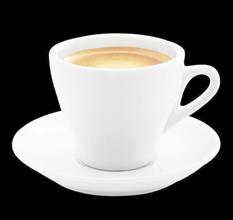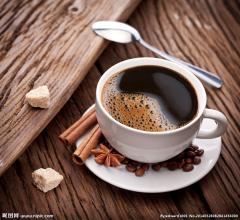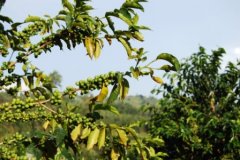Introduction to fine coffee in five steps of blending espresso
A more important reason for making formula beans is that it can create a flavor that cannot be achieved by a single coffee bean. So making recipes is like an art, not just a tool. Interestingly, you can find that the interaction of different characteristics of coffee will form a whole new flavor, not just 1: 1: 1: 2.
When different coffee is combined, the characteristics of each coffee can still be found in some recipes, and even the cup tester can tell which beans are in it, but some combinations will suppress the characteristics of other beans when one side is stronger.
Another advantage of making formula beans is that a good formula can have a long sales cycle, meaning it can satisfy the tastes of most people, and even after a decade, the formula is still popular. In addition, good formula beans should taste good whether they are used for espresso or cooked in a follicular style.
[for five steps to complete a formula bean]
First, plan a process for making a recipe, and you need to think about some basic questions, such as: what kind of customer is your recipe for? Is it a home consumer, a cafe, or a multi-purpose recipe? These questions determine what flavor the recipe should have and how deep it should be baked, and the baker must know what kind of flavor he wants to bake. All these have to be decided beforehand.
Second, all kinds of coffee beans used in the formula must have their own characteristics and can perform well when they are made into individual coffee. Some coffee roasters will use poor beans in the formula and try to cover up its bad taste with baking. Personally, I think this is a thing that gets twice the result with twice the effort, and the guests will not be satisfied.
Third, determine the baking degree of each kind of beans, let the coffee beans show their own characteristics, and combine them into your recipe with their different characteristics. It is recommended to roast before mixing beans, you must try the various roasting degrees of each kind of coffee, this process is very critical, be sure to try more! It is often seen that many roasters ignore this step and decide the baking degree of each cup of coffee too early. Please remember that the best roasting degree of each coffee bean is different, and each kind of coffee tends to have more than one optimal roasting degree. In this way, countless kinds of coffee and so much roasting will turn the work of preparing the recipe into an endless nightmare.
Generally speaking, three baking degrees, mediumlight, medium, and well-done, are recommended. Many coffee roasters copy some well-known recipes, but do not hesitate to bake deep enough to lose their original flavor in order to get the so-called complete caramelization. The result is a lot of black and scorched products. Through shallow roasting, you can get the original flavor, complexity, freshness and sweetness of the coffee. Encourage to try to show your recipe with a lighter baking. Here, if the use of shallow roasting must pay attention to the roaster's baking skills, automatic roaster can not bake a good shallow roasted coffee!
Fourth, you must choose the kinds of raw coffee beans you want and their respective roasting degrees. Remember, you must keep a detailed record of the raw beans, baking techniques, and recipe proportions you use. If you come up with a good recipe, you can refer to the information on the record and continue to improve it.
There are some differences in the coffee beans harvested from season to season, and it is recommended that you re-evaluate your recipe every season. The key to the process of preparing the formula is to make sure that each bean in the formula has been baked to the perfect degree. To make the perfect recipe depends on your tasting ability. Even if you think you have made the best recipe, the final judgment is in the hands of the customer.

Important Notice :
前街咖啡 FrontStreet Coffee has moved to new addredd:
FrontStreet Coffee Address: 315,Donghua East Road,GuangZhou
Tel:020 38364473
- Prev

How to mix coffee to make a cup of coffee with fragrant taste and soft taste
Before blending any coffee, you should first understand the taste characteristics of all kinds of coffee, and at least make it clear in your heart that the taste of the kind of coffee you want to mix can not be achieved by any single coffee. It would be a pity if the blended coffee doesn't taste better than one or more of them. It would be better not to match. If you use which qualities
- Next

90 + Ethiopian water washed boutique coffee beans NistuRuz Nisuluzu
Boutique coffee (specialty coffee) is also called specialty coffee selection coffee. It refers to coffee made from a small number of raw beans with excellent taste grown in an ideal geographical environment. Depending on the special soil and climatic conditions in which they grow, they have outstanding flavor. After strict selection and classification, this kind of coffee is hard in texture, rich in taste and stylish.
Related
- Does Rose Summer choose Blue, Green or Red? Detailed explanation of Rose Summer Coffee plots and Classification in Panamanian Jade Manor
- What is the difference between the origin, producing area, processing plant, cooperative and manor of coffee beans?
- How fine does the espresso powder fit? how to grind the espresso?
- Sca coffee roasting degree color card coffee roasting degree 8 roasting color values what do you mean?
- The practice of lattes: how to make lattes at home
- Introduction to Indonesian Fine Coffee beans-- Java Coffee producing area of Indonesian Arabica Coffee
- How much will the flavor of light and medium roasted rose summer be expressed? What baking level is rose summer suitable for?
- Introduction to the characteristics of washing, sun-drying or wet-planing coffee commonly used in Mantenin, Indonesia
- Price characteristics of Arabica Coffee Bean Starbucks introduction to Manning Coffee Bean Taste producing area Variety Manor
- What is the authentic Yega flavor? What are the flavor characteristics of the really excellent Yejasuffi coffee beans?

